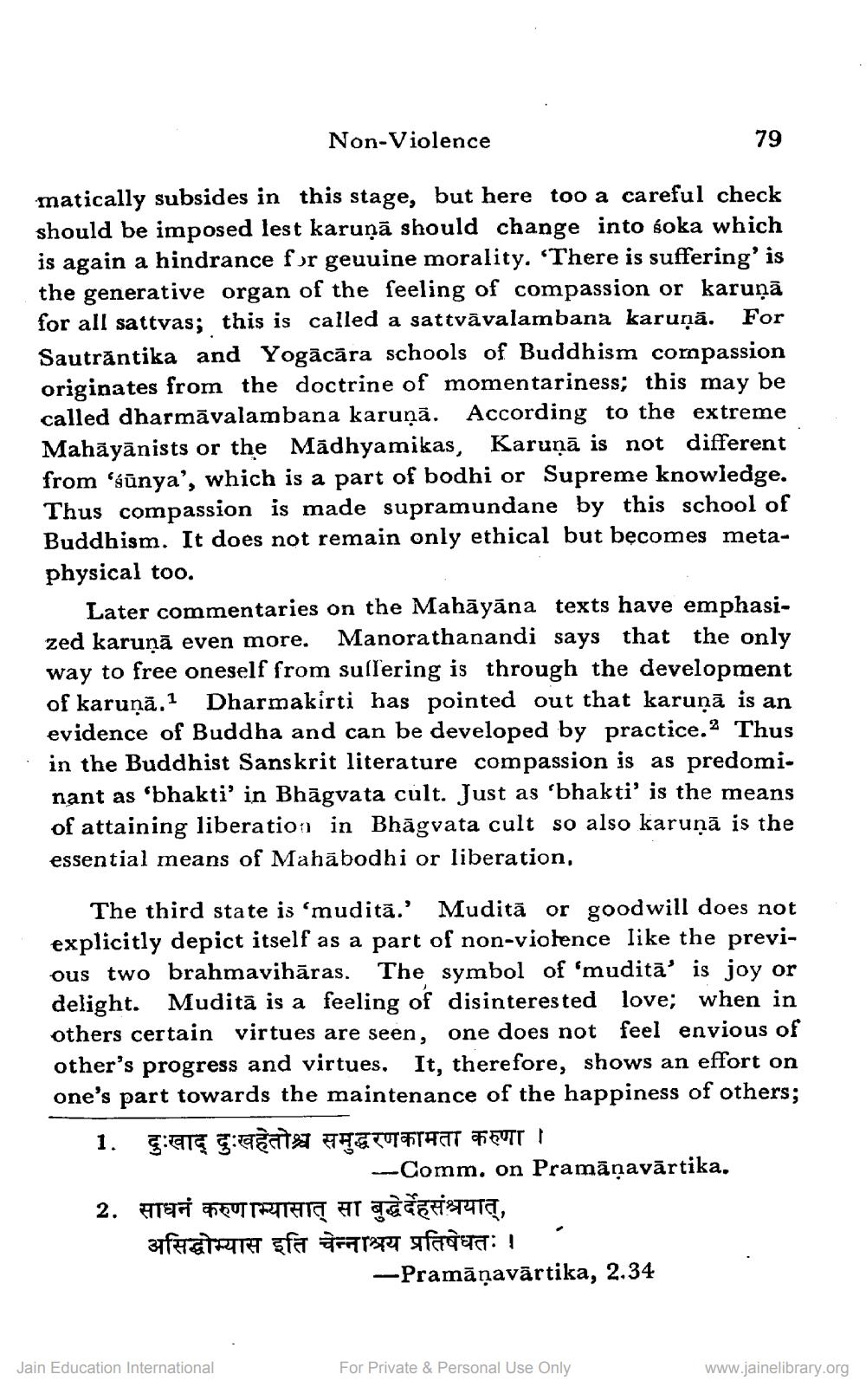________________
Non-Violence
matically subsides in this stage, but here too a careful check should be imposed lest karuņā should change into śoka which is again a hindrance for geuuine morality. 'There is suffering' is the generative organ of the feeling of compassion or karuņā for all sattvas; this is called a sattvävalambana karuņā. For Sautrǎntika and Yogacara schools of Buddhism compassion originates from the doctrine of momentariness; this may be called dharmavalambana karuņā. According to the extreme Mahāyānists or the Madhyamikas, Karuna is not different from 'sunya', which is a part of bodhi or Supreme knowledge. Thus compassion is made supramundane by this school of Buddhism. It does not remain only ethical but becomes metaphysical too.
Later commentaries on the Mahāyāna texts have emphasized karuņā even more. Manorathanandi says that the only way to free oneself from suffering is through the development of karuņā.1 Dharmakirti has pointed out that karuņā is an evidence of Buddha and can be developed by practice. Thus in the Buddhist Sanskrit literature compassion is as predominant as 'bhakti' in Bhagvata cult. Just as 'bhakti' is the means of attaining liberation in Bhagvata cult so also karuņā is the essential means of Mahabodhi or liberation,
1.
The third state is 'mudită.' Muditā or goodwill does not explicitly depict itself as a part of non-violence like the previous two brahmavihāras. The symbol of 'mudita' is joy or delight. Mudita is a feeling of disinterested love; when in others certain virtues are seen, one does not feel envious of other's progress and virtues. It, therefore, shows an effort on one's part towards the maintenance of the happiness of others;
दुःखाद् दुःखहेतोच समुद्धरणकामता करुणा ।
Jain Education International
-Comm. on Pramāṇavārtika.
2. साधनं करुणाभ्यासात् सा बुद्धेर्देहसंश्रयात्, असिद्धभ्यास इति चेन्नाश्रय प्रतिषेधतः ।
79
-Pramāṇavārtika, 2.34
For Private & Personal Use Only
www.jainelibrary.org




